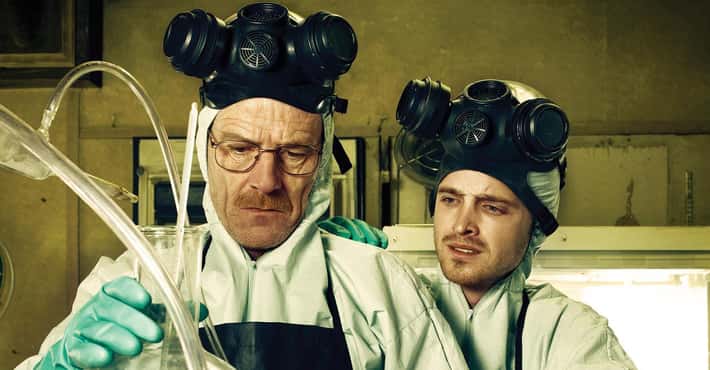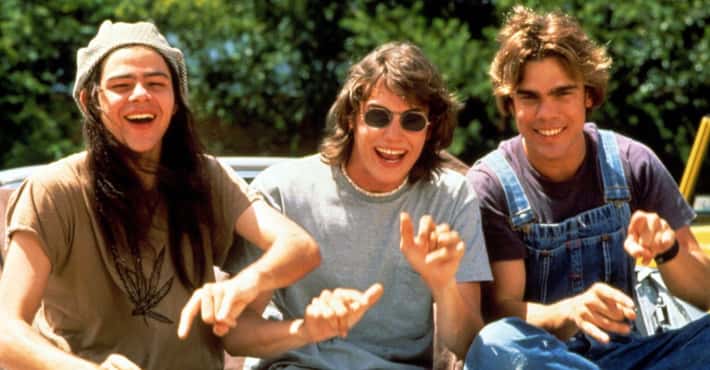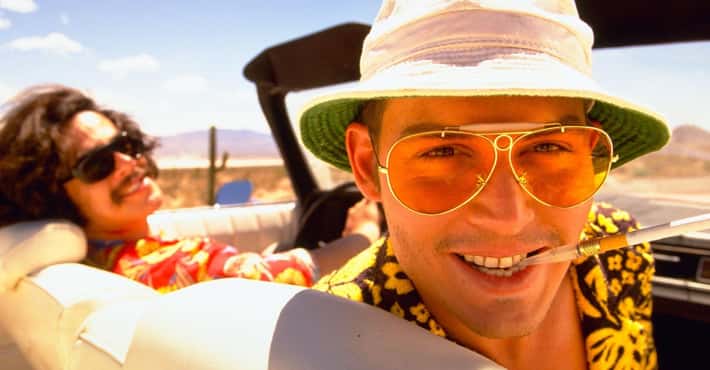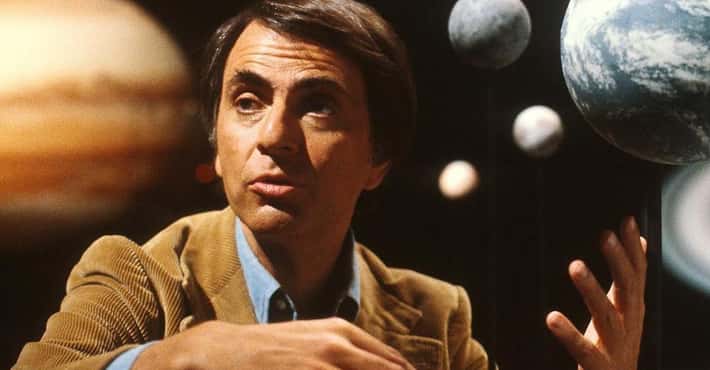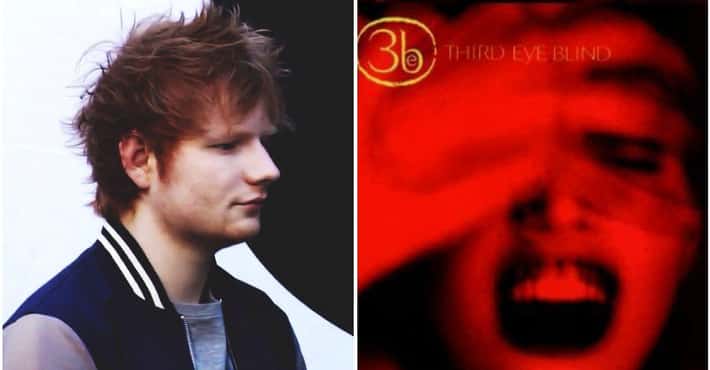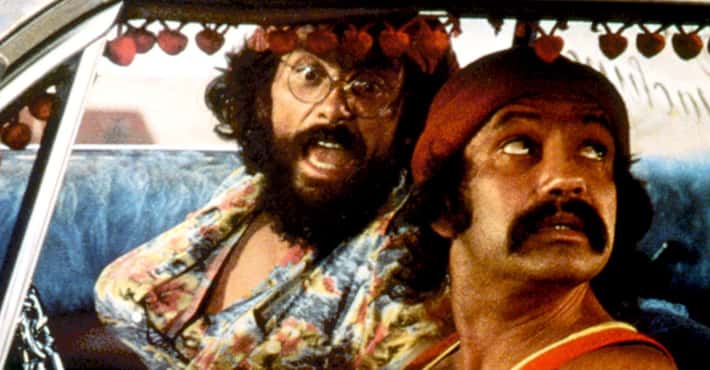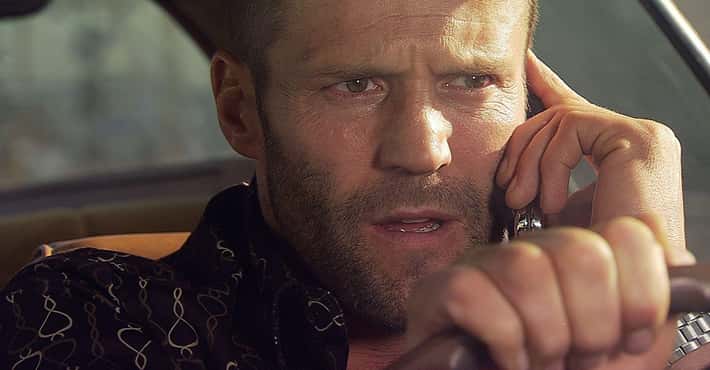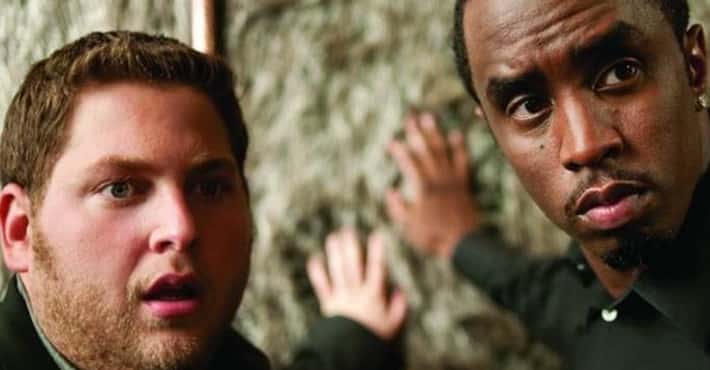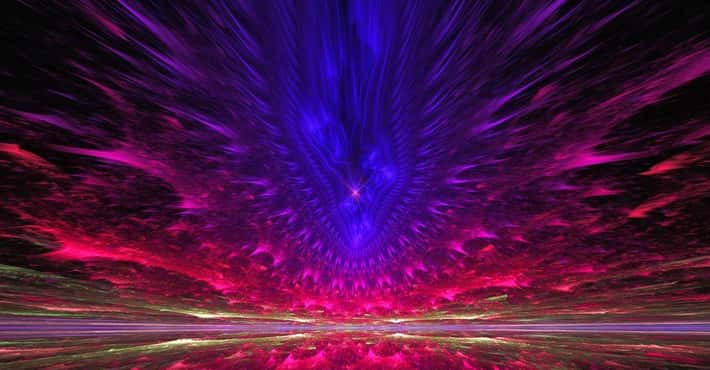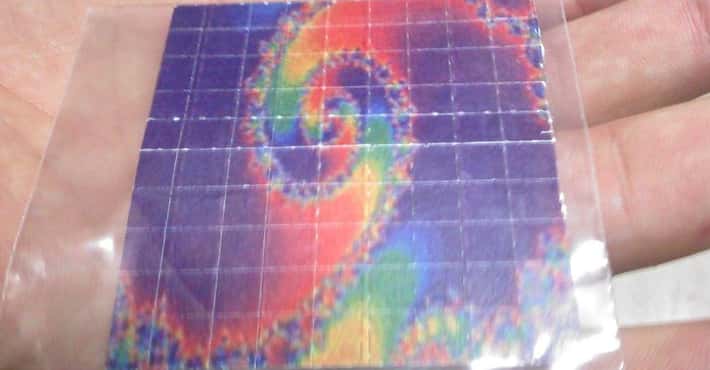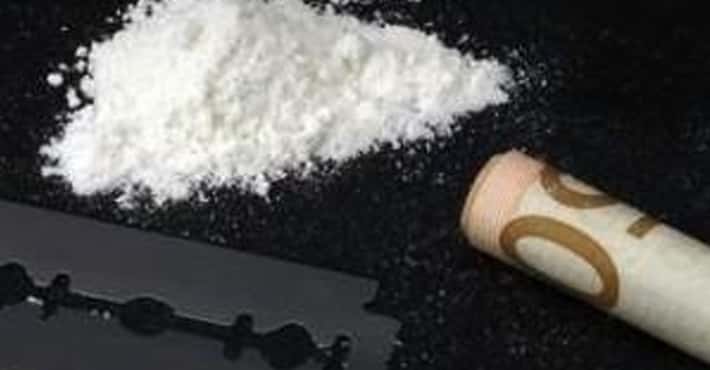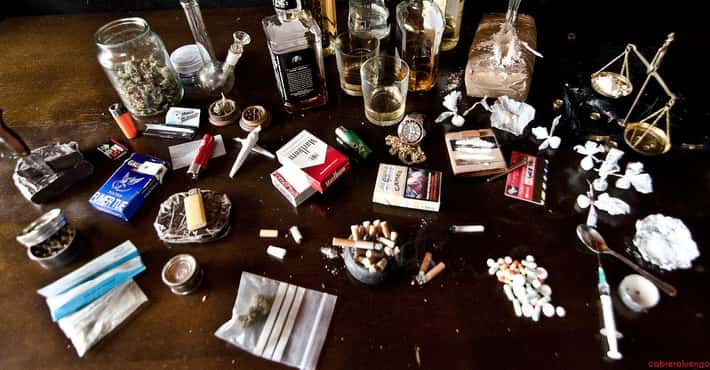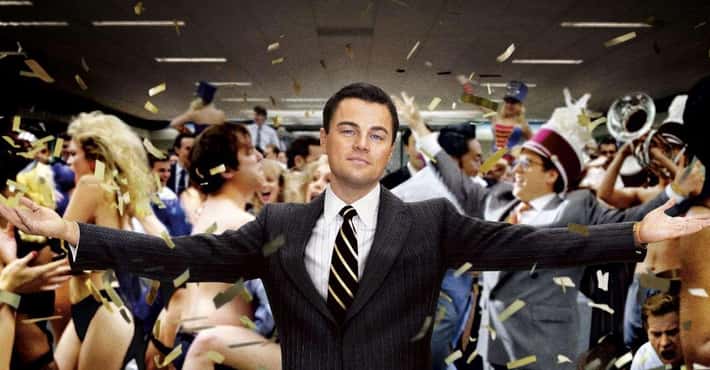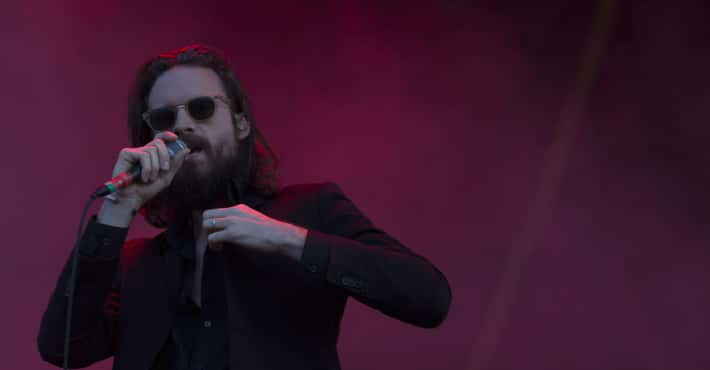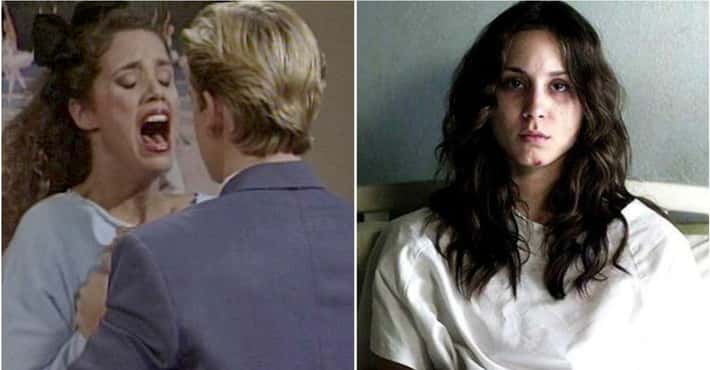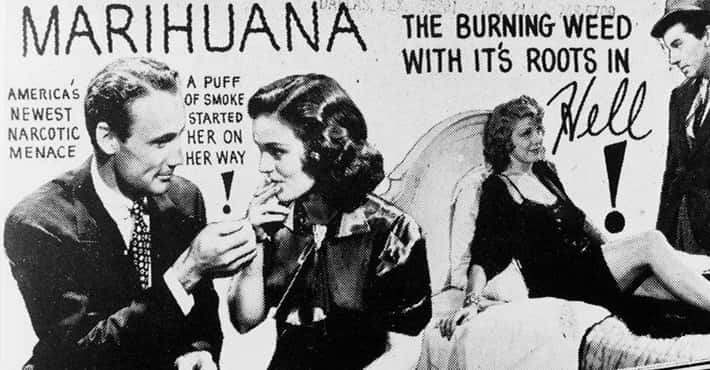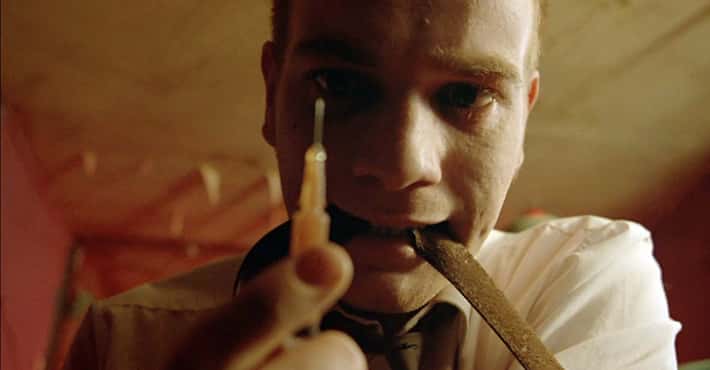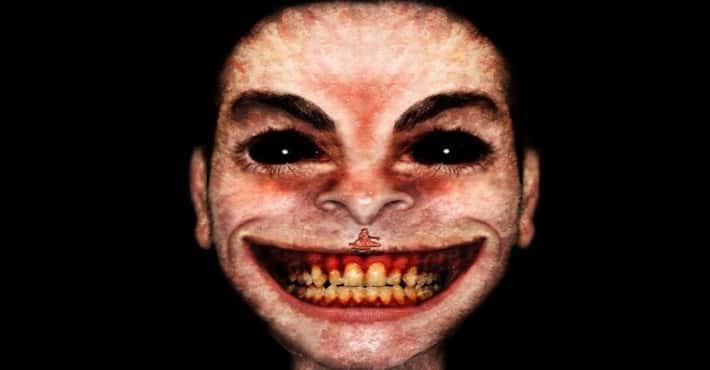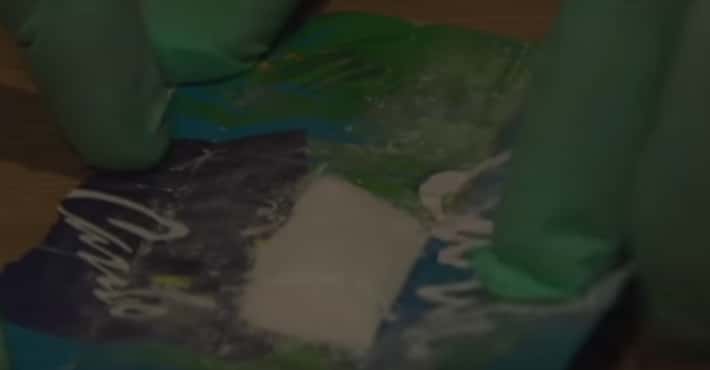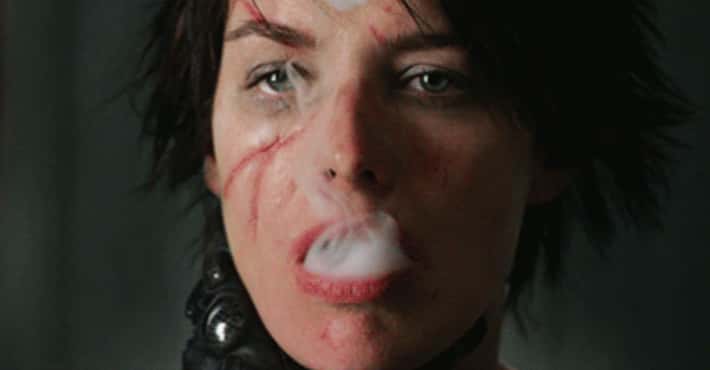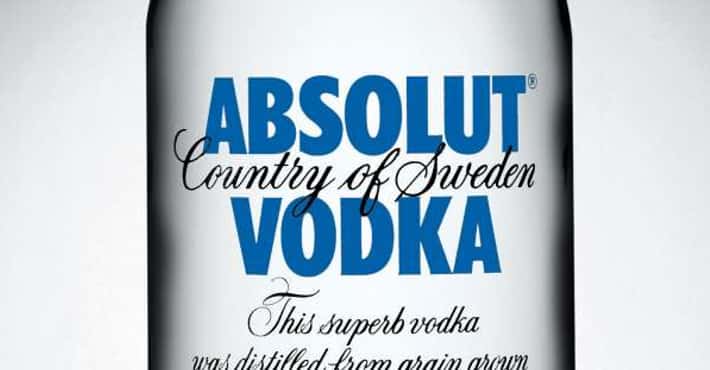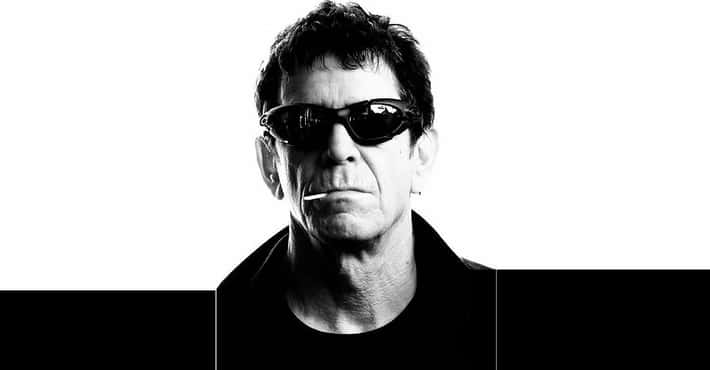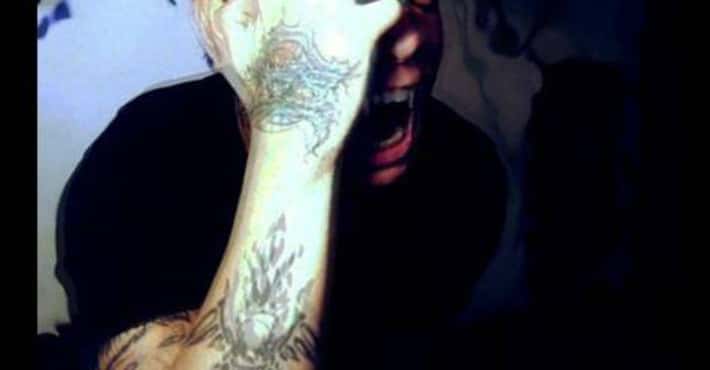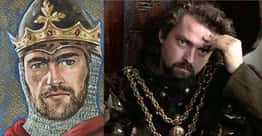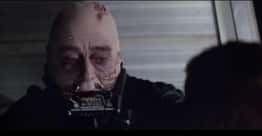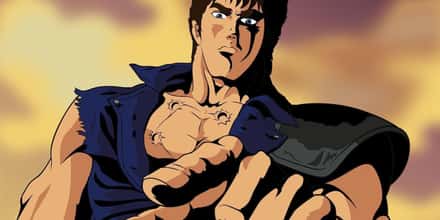Trippy Movies That'll Make You Feel Like You're In An Altered State
Vote up the best trippy movies to watch.
Movies have the magical ability to take audiences to the moon, any country in the world, or any time in history. They can also make you feel like you're high. Directors use techniques like distorted images, trippy music, bright colors, and complex, layered montage to achieve a stoned effect.
Some films that feel like a trip are straight-up stoner movies. No one is going to wax poetic after viewing Cheech and Chong’s Up in Smoke, but you may get contact high. Others, like Richard Linklater’s Waking Life, pose existential (AKA stoner talk) questions about the mysteries of life. There are movies like Enter the Void, which was inspired by mind-altering substances and uses specific imagery to make audiences feel like they're on DMT. Finally, there are a few befuddling films on this list that don’t involve substance use at all.
- 1615 VOTES

- Photo:
Terry Gilliam's 1998 adaptation of Hunter S. Thompson's literary classic Fear and Loathing in Las Vegas takes spectators on a road trip to find the American dream. It's well-known Thompson indulged in large amounts of various substances while writing his acclaimed novel. Gilliam was able to successfully translate Thompson's words with distorted, often animated hallucination-filled imagery. Want to get a sense of what a trip is like? Let Gilliam show you the way.
- #222 of 375 onThe Best Movies Based On Books
- #658 of 704 onThe All-Time Greatest Comedy Films
- #17 of 54 onThe Best Movies 'Loosely' Based On True Stories
- 2443 VOTES

- Photo:
Enter the Void is perhaps Argentine writer/director's Gaspar Noé's most well-known movie (his second film, Irreversible, may be as infamous as Enter the Void is famous). The first person narrative takes place in seedy Tokyo nightclubs, and the story is told from the point of view of Oscar (Nathaniel Brown), a dealer and user who is shot by the police. But that's not where his story ends; Oscar floats out of his body, spirit moving from place to place, dropping in on friends and family.
Enter the Void is a three-hour visual exploration of what it's like to take various substances. It's also way, way deep. To quote Noé on the origins of his ideas for the film:
One day, in my 20s, I... had done too many mushrooms. I turned on the TV as I was coming down, and it was showing Lady in the Lake, the Robert Montgomery film noir that’s filmed entirely through the character’s eyes. I wasn’t so much hallucinating at that point, but I thought it would be great to make a movie like this and add all the experiences I had... on mushrooms — telepathic perception, strange colors around people, the sense of floating.
More Enter the Void- #253 of 425 onThe Greatest Movies in World Cinema History
- #13 of 45 onGreat Movies with a Neon Aesthetic
- #51 of 56 onThe Best Movies We Hope Never Get a Sequel
- 3275 VOTES

- Photo:
Stanley Kubrick's epic 2001: A Space Odyssey moves at a slow pace, often with long stretches of no dialogue, giving viewers time to let the visuals and themes percolate. Kubrick needed the film to appear as futuristic as possible; so futuristic in fact, he wanted the technology portrayed to be ahead of what NASA was doing. One of the trippiest sequences in the sci-fi classic is the famous Stargate scene, with its colored lights and ground breaking visual effects, which won the film an Oscar for Best Effects.
You won't know exactly why the Stargate scene is there or what it means, but you'll enjoy the light show nonetheless, and it may even make you question the great mysteries of the universe.
- #104 of 252 onThe 200+ Best Psychological Thrillers Of All Time
- #701 of 769 onThe Most Rewatchable Movies
- #50 of 675 onThe Best Movies Roger Ebert Gave Four Stars
- 4346 VOTES
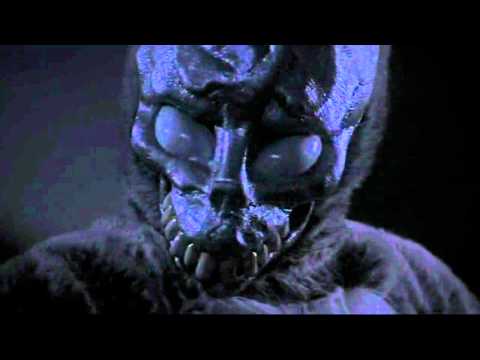
- Photo:
If you have no idea what's going on in Donnie Darko, you're getting it just fine. In many ways, the weirdness is the point. What exactly is the purpose of sinister, man-sized bunny Frank, who befriends alienated Donnie (Jake Gyllenhaal)? Then there's the time travel thing, and that plane engine. Richard Kelly's underground classic is a stoner's delight, and has produced dozens of websites that exist for the sole purpose of trying to figure out the film's many mysteries. If you think you have it figured it, think again.
More Donnie Darko- #656 of 769 onThe Most Rewatchable Movies
- #36 of 168 onThe 160+ Scariest Psychological Thrillers
- #62 of 125 onThe 100+ Grossest Movies Ever
- 5133 VOTES

- Photo:
David Lynch's 1977 directorial debut Eraserhead is weird. Very, very weird. It's also totally illogical and opts to forego traditional storytelling. The tone is dark, the imagery meant to disturb, but also awaken, the audience. The lead character, Henry (Jack Nance), is a total loner who gets forced into marrying Mary X (Charlotte Stewart), who gives birth to a severely deformed baby. Then the incessant screaming begins.
Eraserhead is basically one big fever dream. However, it's also endlessly compelling.
More Eraserhead- #198 of 252 onThe 200+ Best Psychological Thrillers Of All Time
- #73 of 125 onThe 100+ Grossest Movies Ever
- #348 of 397 onThe Best Horror Movies Of All Time
- 6133 VOTES

- Photo:
The groovy animated musical Yellow Submarine was inspired by The Beatles, and features several of their songs, including "Eleanor Rigby" and "Lucy in the Sky with Diamonds." The illogical narrative takes spectators on a colorful and surreal journey, and is humorous, in a dry, British sort of way. When the Blue Meanies threaten Pepperland, The Beatles are enlisted to save the day.
Yellow Submarine is filled with odd, delightful characters and, of course, oodles of references to using.
More Yellow Submarine- #293 of 452 onThe 400+ Best Animated Kids Movies
- #77 of 204 onMusical Movies With The Best Songs
- #192 of 704 onThe All-Time Greatest Comedy Films
- 7203 VOTES

- Photo:
No one uses in Michel Gondry's Eternal Sunshine of the Spotless Mind (2004), but they do endure some supreme confusion. Joel (Jim Carrey) chooses to undergo a procedure to erase the painful memory of his ex-girlfriend, Clementine (Kate Winslet). The procedure is a form of brain damage.
Charlie Kaufman's script is inventive and odd in the best ways imaginable. Because Joel's memories are being erased, his mind plays tricks on him with juxtaposing imagery. For example, we see Joel and Clementine's bed in the middle of a beach, and somehow the couple is able to take a bubble bath in a kitchen sink.
Through surreal imagery, a trippy structure, and heartbreaking narrative, Eternal Sunshine of the Spotless Mind asks probing questions about the nature of memory and identity.
- #98 of 252 onThe 200+ Best Psychological Thrillers Of All Time
- #713 of 769 onThe Most Rewatchable Movies
- #82 of 136 onThe 100+ Best Movies For Date Night
- 8265 VOTES

- Photo:
If you ever had the desire to know what it's like to take something, but were afraid to take the plunge, check out Darren Aronofsky's sophomore effort Requiem for a Dream. But first, you must know, it's one of the most disturbing movies to hit the silver screen. Aronofsky tells the tale of three young adults hooked on smack and one aging mother who gets addicted to uppers in an effort to lose weight for a TV appearance that will never happen.
Through the rapid editing style of hip hop montage and multiple CGI shots, Aronofsky shows audiences the bodily effects of use and the hellish nightmare of dependency.
More Requiem for a Dream- #57 of 252 onThe 200+ Best Psychological Thrillers Of All Time
- #32 of 168 onThe 160+ Scariest Psychological Thrillers
- #1 of 125 onThe 100+ Grossest Movies Ever
- 9107 VOTES

- Photo:
Brazil is another warped gem from Terry Gilliam, whose films could easily fill most spots on this list (he got his start with Monty Python, after all). The movie takes place in an absurd Orwellian world inundated with exceedingly strange visuals. Brazil brilliantly blends black comedy, science fiction, and satire with way over-the-top fantasy elements.
Its inventive visuals are a delight to behold, even when combined with overtly graphic imagery. It will make you feel like you're tripping, in a good way.
More Brazil- #182 of 252 onThe 200+ Best Psychological Thrillers Of All Time
- #362 of 399 onThe Best Movies Of The 1980s, Ranked
- #191 of 232 onThe Best '80s Comedy Movies, Ranked
- 1094 VOTES

- Photo:
Ever wonder how a person can tell the difference between waking life and dream life? That's just one of the philosophical questions Richard Linklater poses in his animated drama Waking Life. Often times, substances lead a person to spiritual and existential quandaries. That is the essence of Waking Life, in which a man sorts through several dream-like realities in order to find out the answers to life's greatest mysteries. In the end, the film doesn't answer any questions, but that's not the point. The point is to learn how to expand your own mind and figure out your own answers.
The animation style used in the film - a rotoscoping-based process layering actual footage and animation - further adds to the trippy feel of Waking Life.
- 11191 VOTES

- Photo:
Plenty of films make using seem glamorous and fun. Trainspotting is not one of them. It's raw and real. The story follows a group of low-income young men in and around Edinburgh, Scotland as they use, get in fights, break the law, get blind drunk, and otherwise waste their lives. The film covers many years, and looks at the social and economic conditions that led to an epidemic and a potentially wasted, forgotten generation.
A lot of Trainspotting is breezy and hilarious, despite unflinching depictions of the horror of withdrawal and the struggle to get clean. Danny Boyle's film pulls no punches in its depiction of hte realities of using.
You may have to watch the film a dozen times to understand what the characters are saying with their thick Scottish accents, but it doesn't really matter, the images say it all.
More Trainspotting- #630 of 769 onThe Most Rewatchable Movies
- #189 of 375 onThe Best Movies Based On Books
- #507 of 704 onThe All-Time Greatest Comedy Films
- 1289 VOTES

- Photo:
Director Jonathan Glazer spent longer than a decade developing Under the Skin from Michel Faber's novel, during which process he struck upon the idea of making a movie about human society as seen by an alien. If that weren't trippy enough, the movie stars Scarlett Johansson as an extraterrestrial living in Scotland who preys on human men. She seduces them, draws them into a pitch black world filled thick liquid, and consumes them. The otherworldly score, surreal imagery, and ethereal tone of Under the Skin submerses viewers in a haze.
More Under the Skin- #306 of 397 onThe Best Horror Movies Of All Time
- #23 of 45 onGreat Movies with a Neon Aesthetic
- #55 of 62 onThe Best Alien Horror Movies Ever Made
- 1358 VOTES

- Photo:
Writer-director Panos Cosmatos's 2012 sci-fi horror film has a similar look and feel to Stanley Kubrick's 2001: A Space Odyssey. Both films have the power to hypnotize, with striking visuals and bold, deliberate, mood-enhancing use of color. The electronic score of Beyond the Black Rainbow sets the film's mood and trippy vibe. Cosmatos brings the spectator into the world of the film with his use of extreme close-ups.
- #16 of 45 onGreat Movies with a Neon Aesthetic
- #9 of 18 onTrippy Sci-Fi Movies That Aren't Mainstream For A Reason
- #9 of 13 onThe Best Horror Movie Synth Scores
- 14128 VOTES

- Photo:
Francis Ford Coppola's Vietnam epic isn't your average war film. The movie opens with "This Is the End," a typically trippy song from The Doors, set to images of a burning jungle. Using layered montage, the scene transitions to the film's protagonist, Captain Willard (Martin Sheen), drunk and stoned into oblivion.
Seeking refuge, many soldiers in the film turn to substances. Coppola employs surreal sets, manic lighting, and the disorienting chaos of conflict to directly bring spectators into the mood.
“My film is not about Vietnam, it is Vietnam," Coppola once famously said about Apocalypse Now. More specifically, he was trying to recreate the experience of being at war while using, as many soldiers were in Vietnam. Apropos of this, the production was fraught with use. Martin Sheen suffered a heart attack and Dennis Hopper decided his character needed to do an ounce of coke a day, so the production supplied him with blow.
More Apocalypse Now- Dig Deeper...Behind-The-Scenes Stories About Marlon Brando In 'Apocalypse Now'
- #17 of 262 onThe 200+ Best War Movies Of All Time
- #492 of 769 onThe Most Rewatchable Movies
- 15119 VOTES

- Photo:
Another live action kid's movie that perhaps is catered to the stoner crowd. As you know from the song, Willy Wonka (Gene Wilder) insists you "count to three and then you'll be in a world of pure imagination." Wonka's factory is not just a munchie utopia, it's a dream world filled with chocolate rivers, Oomapa-Loompas, and characters who float up chimneys and burp themselves down.
The film makes audiences of any age feel magical; there are no limits to the delicious delights of Wonka's factory, even with all his sinister pratfalls.
- 1662 VOTES

- Photo:
What's real and what's fantasy in Italian director Federico Fellini's richly textured semi-autobiographical 8½ (1963)? The loose narrative follows Guido (a Fellini-esque filmmaker) as he attempts to make his latest cinematic masterpiece. However, the brilliance of the film comes during Guido's fantasy and dream sequences, which are filled with images that don't quite make sense.
8½ is one of the finest films ever made about filmmaking, it's endless self-reference and surreal fantasy elements will certainly make any mind spin with delight.
- 17146 VOTES

- Photo:
Coen Brothers neo-noir The Big Lebowski is about a guy who's perpetually stoned, made in such a way you'll start to feel pretty blazed, too. The hazy, illogical narrative follows The Dude (Jeff Bridges), who smokes tons of weed, drinks White Russians at all hours of the day, and goes great lengths to get his rug back, because, you know, it really ties the room together. Among the film's many trippy innovations is the Gutterballs sequence, in which The Dude takes a cosmic journey through a bowling alley.
The Big Lebowski is a delightful movie about a total slacker. It doesn't make a ton of sense, and is beloved for its weirdness and originality.
- 1884 VOTES

- Photo:
Oliver Stone's biography of legendary 1960s rock band The Doors is has several scenes featuring substance use. The most iconic, which will make you feel all trippy inside, is when the band travels to the Mojave Desert to take peyote. They hug, dance, and play in the sand. Jim Morrison (Val Kilmer) in voice over recites a bit of his surreal poetry:
When the serpent appears, his head is ten feet long and five feet wide. He has one red eye and one green eye. He's deadly and he's seven miles long. As he moves, on his scales is written all the history of the world, all people, all actions, all of us our little pictures on the scales, God it's big! And it's eating as it moves all the time, devouring, digesting consciousness, power, a monster of energy!
More The Doors- #24 of 86 onThe Best Movies Of 1991, Ranked
- #80 of 241 onThe 200+ Best Movies Based On A True Story
- #239 of 278 on'Old' Movies Every Young Person Needs To Watch In Their Lifetime
- 1999 VOTES

- Photo:
Nobody uses in Memento (2000). There are no trippy substances or moody '60s music. Instead, the film's backward-moving narrative confuses the audience as much as it does the story's protagonist, Leonard (Guy Pearce), who suffers short-term memory loss. One result of taking substances is feeling bewildered, and watching Memento results in that same delirious effect.
More Memento- #32 of 252 onThe 200+ Best Psychological Thrillers Of All Time
- #742 of 769 onThe Most Rewatchable Movies
- #77 of 125 onThe 100+ Grossest Movies Ever
- 2099 VOTES

- Photo:
Is it possible to make a live action kid's movie that makes adults feel trippy? Film critic Erich Kuersten describes The Wizard of Oz (1939) as "a metaphor for acid itself." In fact, hippies in the 1960s and 1970s interpreted Dorothy's adventure in Oz as one long trip. There are talking lions, scarlet poppies, flying monkeys, and brilliant technicolor. Additionally, some stoner genius discovered the film perfectly synchs up with Pink Floyd's The Dark Side of the Moon.
- 21118 VOTES

- Photo:
Is Up in Smoke (1978) the best stoner movie ever made? That's an argument for another list, but Cheech and Chong smoke so much weed in Up in Smoke the audience could feasibly get contact high. There isn't much plot or character development in this classic, but who needs that stuff anyway?
- #78 of 704 onThe All-Time Greatest Comedy Films
- #1 of 93 onThe 85+ Best Stoner Comedies Ever
- #102 of 104 onThe Best Film Franchises, Ranked
- 2280 VOTES

- Photo:
The post-Matrix output of the Wachowski Siblings is maybe the most maligned oeuvre in modern science fiction, yet their films absolutely succeed as absurd, delirious, maximalist statements on the limitless possibilities of filmmaking in the CGI era. While most filmmakers use the tools at their disposal to enhance maudlin realities or breathe life into monsters and giants we've seen 1000 times before, the Wachowskis seem to have a fervent desire to drive the train off the rails, into a chasm of surreal imagery and fracturing narrative.
Case in point: Speed Racer. The movie's disorienting race scenes, aggressive use of color, and sense-overwhelming editing techniques gives the effect of going to a laser light show at Disneyland after taking something.
There's no denying the effects induced by watching this wild movie, which is equal parts anime, video game, Japanese game show, sci fi epic, and trip.
More Speed Racer- #20 of 20 on20 'Bad' Sci-Fi Movies That Are Actually Good
- #5 of 18 onVisually Stunning Movies That Are Also Just Trash
- #7 of 15 on15 Underrated Hyper-Stylized Action Movies




